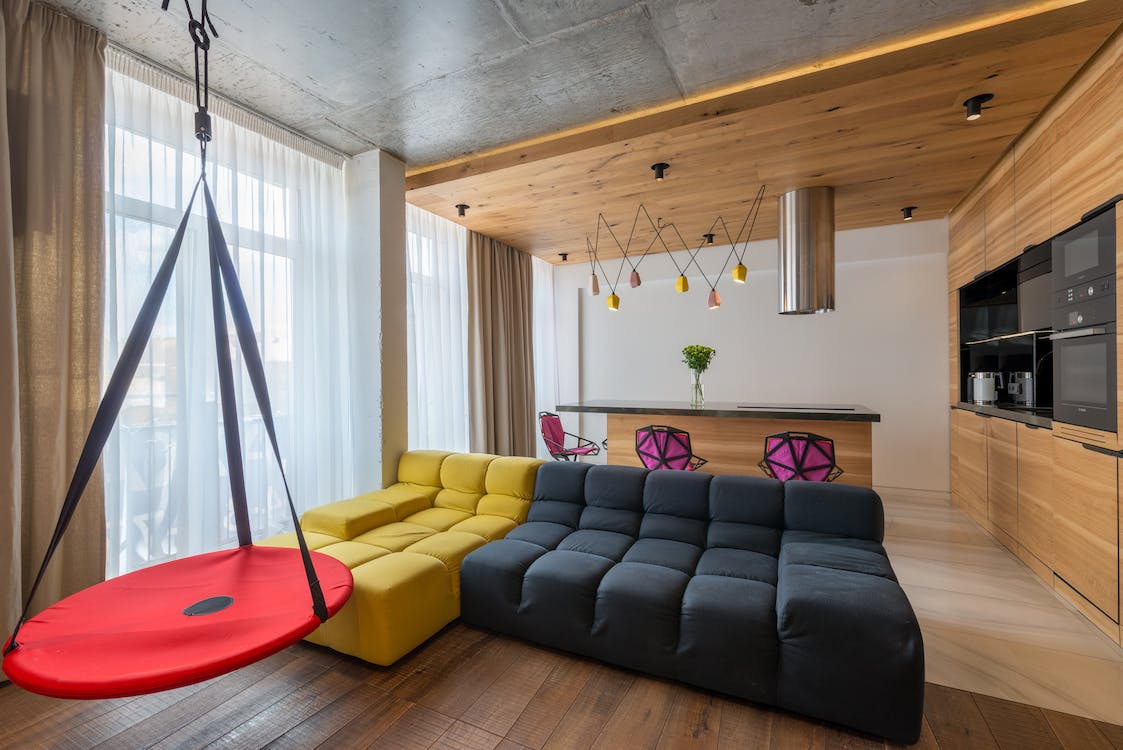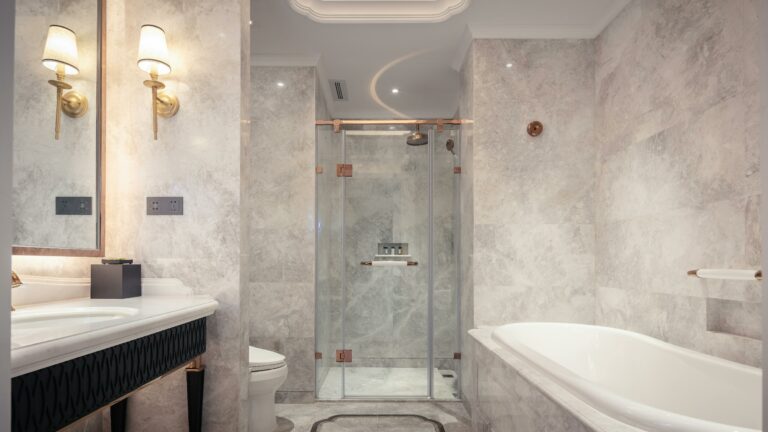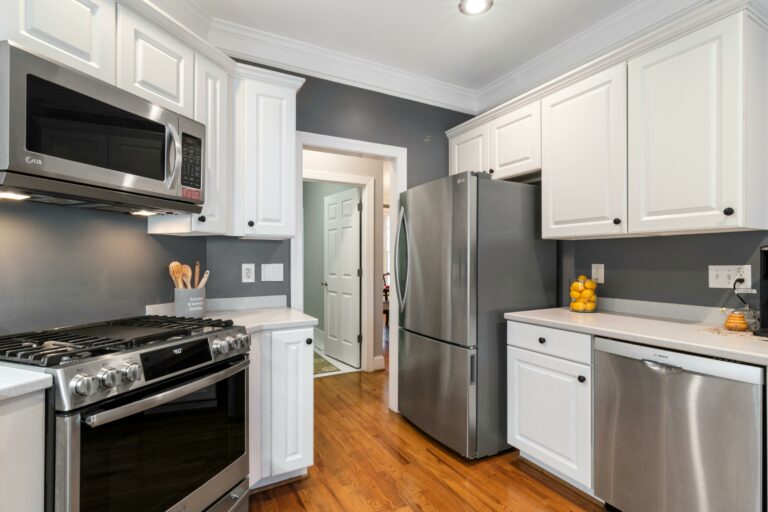Designing a Kid-Friendly Home : Tips for Family-Focused Architecture in 2024
Welcome to our guide on designing a kid-friendly home! Whether you’re a parent, a grandparent, or simply someone who wants to create a space that is inviting and safe for children, this article is for you. We will explore various design elements and considerations that can help you create functional, durable, and visually satisfying spaces that cater to the needs of your family.
But why is it important to design a home with children in mind? Well, the answer is simple. Children are unique beings with specific needs and interests. Therefore, creating a home that fosters their growth, development, and happiness is crucial. By incorporating elements such as kid-friendly furniture, safety measures, and storage solutions, you can create an environment that not only encourages their imagination and creativity but also ensures their safety.
So, whether you are starting from scratch or looking to make improvements to an existing space, let’s get started on transforming your home into a haven for your little ones!
Table of Contents
- 1 Creating Functional Spaces for Families
- 2 Location Considerations for Homes with School-Aged Children
- 3 Design Elements for a Family-Friendly Home
- 4 Planning Policies for Family-Friendly Units
- 5 Impact of Architecture on Family Quality of Life
- 6 Creating Child-Friendly Urban Spaces
- 7 Involving Children in Design Process
- 8 Designing Schools for Child-Friendly Approach
- 9 Choices of Flooring Material for Designing a Kid-Friendly Home
- 10 Encouraging Children’s Exploration in Architecture
- 11 Creating Inclusive Environments for Autistic Children
- 12 Conclusion
- 13 Frequently Asked Questions
Creating Functional Spaces for Families
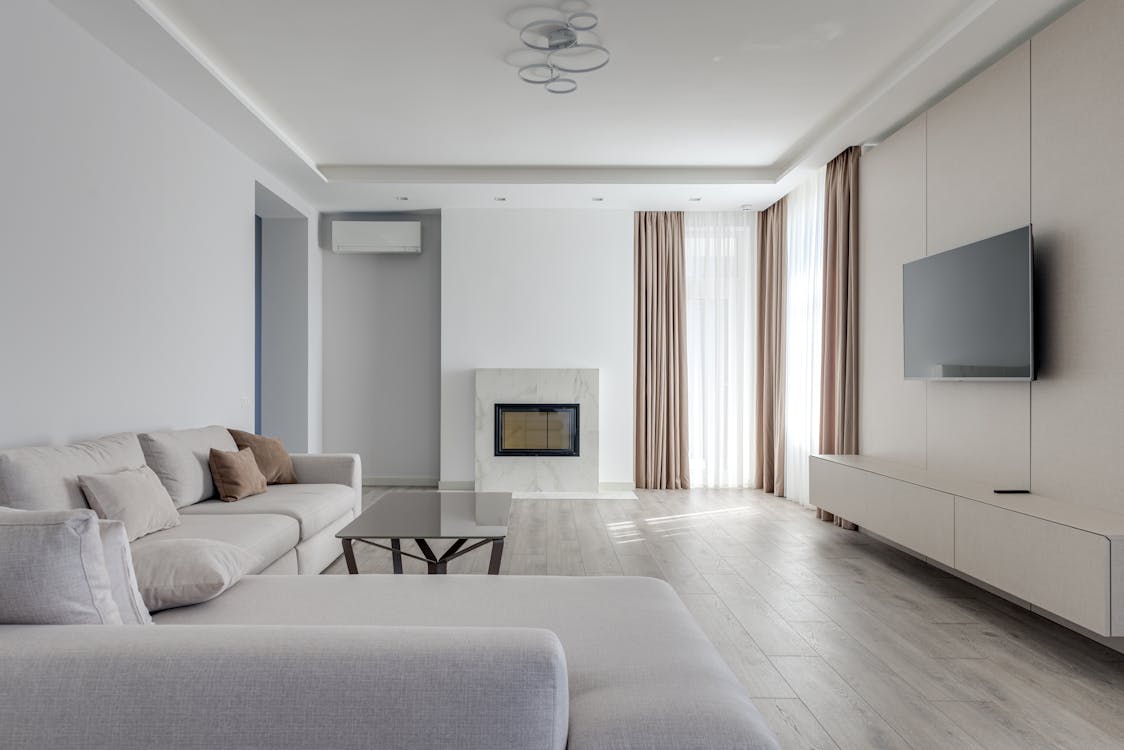
It’s no secret that families are constantly on the move, juggling school, work, extracurricular activities, and more. With such busy lives, it’s crucial to have a home that accommodates the needs of each family member. Creating functional spaces within your home is essential for a smooth and convenient family life. Here are some tips for designing practical and efficient spaces for your family:
Efficient Dining Spaces
Did you know that 32% of families spend 20 minutes or less eating dinner? This statistic clearly indicates a need for efficient and functional dining spaces. Here are some ideas to consider when designing your dining area:
- Open floor plan: An open floor plan allows for easy flow between the kitchen and dining area, making it convenient to serve and clean up after meals.
- Ample seating: Ensure that your dining area can comfortably accommodate everyone in your family, as well as guests. Consider a spacious dining table or even a breakfast bar for quick meals.
- Easy-to-clean surfaces: Opt for materials that are easy to clean and maintain. Choosing stain-resistant fabrics for chairs and spill-proof table surfaces can save you a lot of cleaning time and effort.
Shared Family Space
In addition to the dining area, it’s important to have a shared family space where everyone can come together and spend quality time. Here are some ideas for creating a functional and inviting shared family space:
- Comfortable seating: Invest in comfortable and durable furniture that can withstand the wear and tear of family life. Consider options like sectional sofas or oversized bean bags that can accommodate multiple family members.
- Storage solutions: Incorporate ample storage options to keep the space clutter-free. Consider built-in shelving, ottomans with hidden storage, or entertainment centers that can house all your family’s media devices and accessories.
- Flexible layout: Design the space in a way that allows for flexibility and adaptability. This could mean installing movable furniture or partition walls that can be adjusted to create separate zones for different activities.
Remember, creating functional spaces for your family is all about finding the right balance between practicality and aesthetics. By considering the needs and activities of your family members, you can design spaces that promote efficiency, convenience, and quality time together.
“The dining table is the heartbeat of the home.” – Emily Henderson
Location Considerations for Homes with School-Aged Children
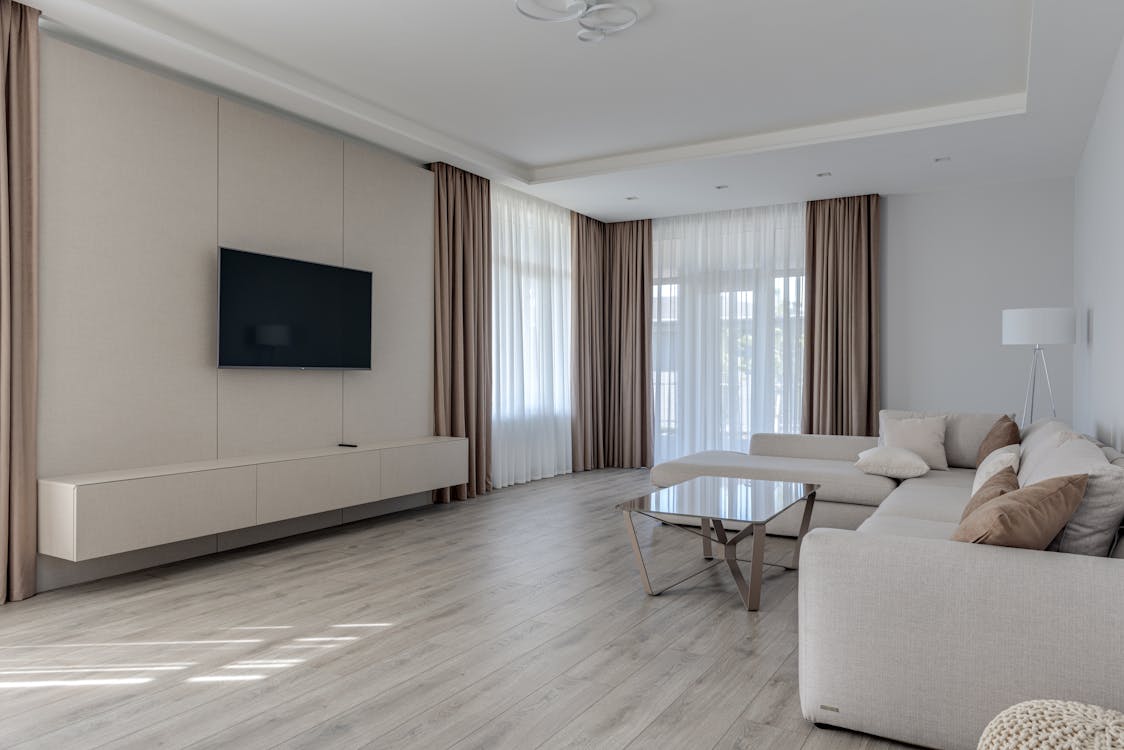
When looking for a new home, parents with school-aged children have a unique set of considerations to keep in mind. The location of a home can greatly impact a child’s education and overall family lifestyle. Here are some important factors to consider when searching for the perfect family-friendly location:
Proximity to Schools
One of the most important factors to consider is the proximity of the home to schools. Parents want to ensure that their children have a short and safe commute to school. Research has shown that 45% of buyers with school-aged children consider school convenience when buying a home. Being close to schools not only saves time but also allows children to participate in extracurricular activities without the hassle of long commutes.
Safety and Walkability
Safety is always a top concern for families, and this is especially true when it comes to their children. Look for neighborhoods that are known for being safe and have low crime rates. Additionally, consider the walkability of the area. Is it easy to walk or bike to school, parks, and other amenities? Living in a walkable neighborhood not only promotes physical activity but also fosters a sense of community.
Neighborhood Amenities
Families with school-aged children often prioritize neighborhoods that offer a range of amenities. Look for areas that have parks, playgrounds, community centers, and sports facilities nearby. These amenities not only provide opportunities for children to engage in physical activity but also offer spaces for socializing and building friendships with other children in the community.
Access to Transportation
Transportation options are important for families, especially those with working parents. Consider the availability of public transportation and the proximity to major roads and highways. This will make commuting to work and school much easier and more convenient. Additionally, access to public transportation opens up opportunities for children to independently travel to extracurricular activities or meet up with friends.
Community and School District
Lastly, consider the overall community and school district. Research the reputation of the schools in the area and the quality of education they offer. Look for neighborhoods that have a strong sense of community and are known for their family-friendly atmosphere. This will ensure that your child has access to a supportive and nurturing environment both at school and in the surrounding community.
By taking these location considerations into account, you can find a home that not only meets your family’s needs but also provides a great environment for your school-aged children to thrive. Remember, choosing the right location is a crucial step in creating a family-friendly home!
Design Elements for a Family-Friendly Home
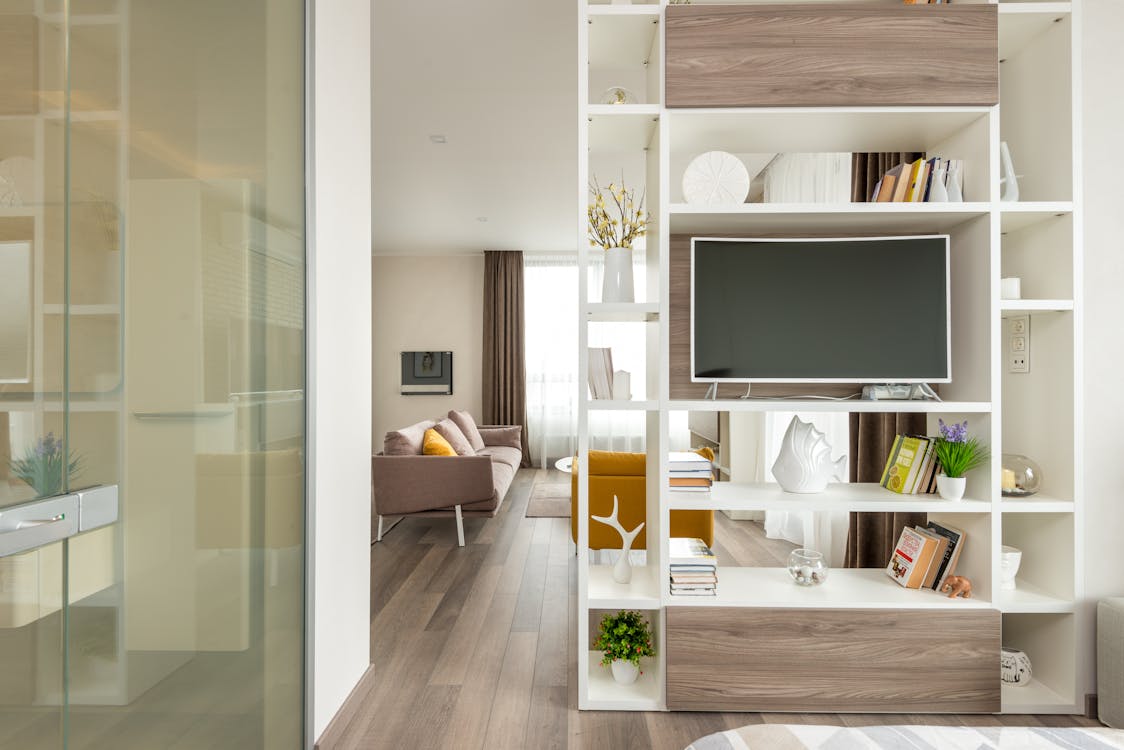
Designing a home that is both aesthetically pleasing and functional for a family with children can be a daunting task. It requires considering the needs of every family member and incorporating elements that can enhance safety, durability, and storage. Here are some design elements to consider when creating a family-friendly home:
Kid-friendly Furniture and Fabrics
When it comes to choosing furniture for a family-friendly home, it’s important to select pieces that are durable and can withstand the wear and tear of active children. Look for furniture made from sturdy materials like hardwood or high-quality upholstery that is easy to clean. Avoid furniture with sharp corners or delicate fabrics that can easily get stained or damaged. Opt for rounded edges and fabrics that are resistant to spills and stains, such as microfiber or leather.
Safety and Durability Design
Safety should be a top priority when designing a family-friendly home. Consider incorporating the following design elements to ensure a safe environment for your children:
- Install childproof locks on cabinets and drawers
- Use slip-resistant flooring materials in high-traffic areas
- Install handrails and guardrails on staircases
- Choose window treatments that are cordless or have inaccessible cords
- Use non-toxic materials for paints and finishes to minimize exposure to harmful substances
In addition to safety, durability is also essential. Children are notorious for putting everything to the test. Invest in materials that can withstand their playful antics and stand up to the test of time.
Storage Solutions
One of the biggest challenges in a family home is keeping it organized and clutter-free. Incorporating ample storage solutions can help with this. Here are a few ideas:
- Maximize wall space with built-in cabinets and shelves
- Use multi-functional furniture like ottomans with hidden storage compartments
- Install a mudroom or entryway with hooks and cubbies for shoes and coats
- Create designated storage areas for toys, books, and art supplies
- Utilize under-bed storage and closet organizers to maximize space
By providing ample storage throughout the home, you can help keep things tidy and maintain a sense of order, even in the busiest of households.
Designing a family-friendly home involves thoughtful consideration of the unique needs and challenges of family life. By incorporating kid-friendly furniture and fabrics, safety and durability design elements, and practical storage solutions, you can create a space that is both stylish and functional for the whole family.
Additional Info:
Did you know that planning policies often require a minimum mix of family-friendly units in new projects, aiming for 35%? This means that the need for family-friendly homes is not only a personal preference but also an important consideration for urban planning authorities. So, as you design your family-friendly home, you are not only creating a comfortable space for your loved ones but also contributing to the overall well-being of your community.
Planning Policies for Family-Friendly Units

Planning policies play a crucial role in ensuring that communities are designed to support and accommodate the needs of families. These policies set guidelines and requirements for developers when constructing residential units to ensure that they are family-friendly. Here are some key points to consider when it comes to planning policies for family-friendly units:
- Minimum Mix of Family-Friendly Units: Many planning policies require a minimum mix of family-friendly units in new projects. This means that developers must include a certain percentage of units specifically designed to meet the needs of families. In some cases, the requirement is as high as 35% of the total units in a development project, emphasizing the importance of providing adequate housing options for families.
- Designated Amenities and Facilities: Planning policies often mandate developers to include certain amenities and facilities that are essential for families. These can include playgrounds, community centers, parks, and green spaces. These amenities create an environment that fosters community engagement, promotes physical activity, and provides spaces for children to play and interact with their peers.
- Safe and Accessible Outdoor Spaces: Families with children require safe and accessible outdoor spaces where kids can play and families can spend quality time together. Planning policies can include requirements for developers to create dedicated outdoor play areas, pedestrian-friendly pathways, and well-lit common areas to ensure the safety and enjoyment of residents.
- Proximity to Schools and Services: Families with school-aged children often prioritize proximity to schools when choosing a home. Planning policies may mandate developers to consider the location of schools and necessary services, such as healthcare facilities and childcare centers, when planning new residential projects. This ensures that families have convenient access to essential services without having to travel long distances.
- Integration of Family-Friendly Design Principles: Planning policies can also encourage the integration of specific design principles that make homes more family-friendly. These can include features such as open floor plans, ample storage space, childproofing measures, and flexible layouts that can adapt to a family’s changing needs over time.
Incorporating these planning policies for family-friendly units helps create communities that are supportive and inclusive for families. By considering the unique needs of families in the planning and design process, we can create spaces that promote a high quality of life for all residents, especially children.
Did you know? Planning policies require a minimum mix of family-friendly units in new projects, aiming for 35%. This ensures that families have access to suitable housing options that meet their specific needs.
Impact of Architecture on Family Quality of Life

When designing a home, architecture plays a crucial role in creating a space that enhances the quality of life for the entire family. The way a home is designed can have a significant impact on family dynamics, safety, and overall well-being. Here, we will explore the various ways in which architecture can positively affect a family’s quality of life.
Safety Design Considerations
One of the primary considerations when designing a family-friendly home is safety. Architecture can play a critical role in ensuring the safety and well-being of family members, especially children. Here are some safety design considerations that architects should keep in mind:
- Childproofing: Incorporate childproofing measures such as safety gates, rounded corners, and window locks to prevent accidents and injuries.
- Easy Accessibility: Design the home with features that make it easy for children and elderly family members to navigate, such as wide doorways, ramps, and grab bars in bathrooms.
- Secure Outdoor Spaces: Create secure outdoor spaces, such as a fenced backyard or an enclosed play area, to allow children to play safely.
Visual Satisfaction
Architecture can also have a profound impact on the visual satisfaction of a family. A well-designed home with aesthetically pleasing elements can create a positive atmosphere and enhance the overall well-being of its occupants. Here are some ways in which architecture can contribute to visual satisfaction:
- Natural Light: Incorporate large windows and skylights to maximize natural light, which not only creates a brighter and more inviting space but also has a positive impact on mood and overall well-being.
- Open Floor Plans: Use open floor plans that promote a sense of spaciousness and encourage family interaction and connectivity.
- Utilize Nature: Incorporate elements of nature into the architecture, such as indoor plants or a courtyard, to create a soothing and visually pleasing environment.
Architecture has the power to shape our daily experiences and improve the quality of life for families. By considering safety design considerations and creating visually satisfying spaces, architects can design homes that promote harmony, well-being, and happiness.
“I believe that architecture is a social act. It is about giving people a better quality of life and a sense of belonging.” – Moshe Safdie
In the next section, we will explore the importance of creating child-friendly urban spaces and how architects can contribute to designing apartments and buildings with families in mind.
Creating Child-Friendly Urban Spaces
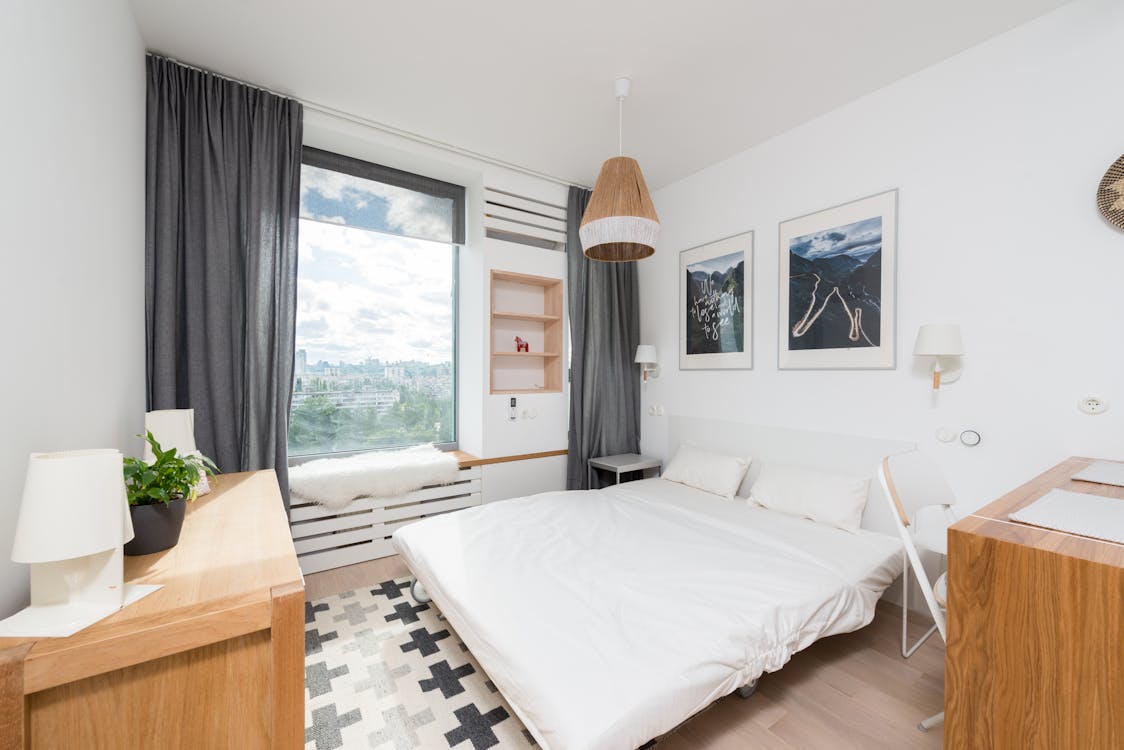
In today’s fast-paced urban environments, it is crucial to design cities that cater to the needs and well-being of children. Creating child-friendly urban spaces can enhance their development, encourage physical activity, and promote social interaction. In this section, we will explore some key considerations and strategies for designing apartments and buildings with families in mind, as well as integrating playful learning landscapes within the urban fabric.
Designing Apartments and Buildings for Families
Designing apartments and buildings with families in mind involves thoughtful planning and consideration of their unique needs. Here are some key elements to keep in mind:
- Spacious and Flexible Layouts: Families require adequate space for their growing children. Design units that offer enough bedrooms, storage areas, and open living spaces that can adapt as children’s needs evolve.
- Safe and Secure Spaces: Safety is a top priority when designing for families. Pay attention to features like child-proof locks, window guards, and secure outdoor play areas to ensure the well-being of children.
- Accessible Amenities: Make sure that essential amenities such as parks, playgrounds, and schools are easily accessible within the vicinity. Proximity to these amenities reduces the need for long commutes and allows children to actively participate in their community.
Integrating Playful Learning Landscapes
Playful learning landscapes are spaces that combine play and learning opportunities, encouraging children’s development in a fun and interactive way. Here are some ways to integrate these spaces within the urban environment:
- Parks and Playgrounds: Design parks and playgrounds with a variety of equipment, such as swings, slides, climbing structures, and sandpits. Incorporating natural elements like trees and plants creates a more stimulating and engaging environment.
- Interactive Public Art: Install interactive public art installations that invite children to explore, interact, and learn. This can include sculptures, murals, or installations that feature sensory elements or educational information.
- Green Spaces and Gardens: Allocate spaces for community gardens where families can grow their own fruits and vegetables. This not only provides an opportunity for children to learn about nature and healthy eating but also promotes a sense of community and connection with the environment.
- Outdoor Learning Areas: Design outdoor learning areas that can accommodate educational activities. This can include seating areas for storytelling, chalkboard walls for drawing and writing, or mini amphitheaters for small performances.
By integrating these playful learning landscapes, urban spaces become more inviting and inclusive for children and families. These spaces not only promote physical activity but also foster creativity, socialization, and cognitive development.
“Designing child-friendly urban spaces is essential for creating vibrant and livable communities. By integrating playful learning landscapes and considering the needs of families, we can ensure that children have safe and engaging environments to grow, learn, and thrive.”
In the next section, we will explore how involving children in the design process can further enhance the child-friendliness of urban spaces.
Also Read: Mastering the Art of Interior Design : Tips for Homeowners in 2024.
Involving Children in Design Process

Designing a Kid-Friendly Home is not only about creating spaces that are safe and functional for children, but it’s also about empowering them to have a voice in the design process. By involving children in the decision-making, you can create spaces that truly reflect their personalities and interests. Here are some ways you can involve children in the design process:
- Ask for their input: When planning a new room or a renovation project, sit down with your children and ask them what they would like to see in the space. This could be anything from their favorite colors and themes to specific furniture or storage solutions. By involving them in the decision-making, you are giving them a sense of ownership and making the space truly theirs.
- Create a design board: Gather images, fabrics, and color swatches that align with your child’s preferences and create a design board together. This visual representation will help your child understand how everything will come together and make them feel like they are part of the process. It’s a fun and creative way to collaborate on the design.
- Take them shopping: Bring your children along when you go furniture or accessory shopping. Allow them to choose items that speak to their style and personality. This not only helps in involving them but also teaches them valuable decision-making skills. They will feel excited and proud to see their choices come to life in their own space.
- Encourage creativity: Give your children the opportunity to express their creativity through art and crafts projects. They can create their own artwork to be displayed in their room or design their own custom decals for the walls. This not only adds a personal touch to the design but also fosters their imagination and artistic abilities.
- Prioritize functionality: While involving children in the design process is important, it’s also crucial to prioritize functionality and safety. Ensure that the design choices align with the needs and age-appropriateness of your children. For example, consider incorporating built-in storage solutions or child-safe materials into the design to create a space that is not only aesthetically pleasing but also functional.
Involving children in the design process not only creates a sense of ownership but also fosters their creativity, decision-making skills, and self-expression. It’s a wonderful opportunity to bond with your children and create a home that truly reflects your family’s unique dynamics and interests. So, don’t hesitate to involve your children in the design process and create a space that they will love and cherish!
Designing Schools for Child-Friendly Approach

When it comes to designing schools, it’s essential to create spaces that are not only functional but also child-friendly. Schools play a crucial role in shaping a child’s education and development, so it’s important to ensure that the design of the school supports their learning and well-being. Here are some key considerations for designing schools with a child-friendly approach:
Improving Mental Health
Mental health is a significant factor in a child’s overall well-being and ability to learn. When designing schools, it’s important to create spaces that promote positive mental health. This can be achieved through:
- Natural Lighting: Incorporate plenty of natural light into classrooms and common areas. Natural light has been found to improve mood and concentration levels, which can positively impact students’ mental health.
- Quiet Spaces: Designate areas within the school where students can retreat to if they need a quiet and calm space. These spaces can be used for relaxation, mindfulness activities, or even counseling sessions.
- Biophilic Design: Incorporate elements of nature into the school design, such as indoor plants or outdoor green spaces. Research has shown that exposure to nature can reduce stress and improve mental well-being.
Enhancing Social Skills
Schools are not just about academics; they also play a crucial role in developing a child’s social skills. Here are some design considerations to enhance social interaction:
- Open and Collaborative Spaces: Design classrooms and common areas with open and flexible spaces that encourage collaboration and group work. This allows students to interact with their peers and develop their social skills.
- Common Gathering Areas: Create designated spaces where students can gather, such as courtyard or cafeteria areas. These areas provide opportunities for students to socialize and build relationships outside of the classroom.
- Community Involvement: Design schools that foster community involvement by incorporating spaces for parents and community members to engage with the school. This can include areas for parent-teacher meetings or community events.
Promoting Physical Health
Physical health is crucial for a child’s development and their ability to focus and learn. Here are some design elements to promote physical health within schools:
- Ample Outdoor Spaces: Design schools with ample outdoor spaces for physical activities and play. This can include playgrounds, sports fields, or even rooftop gardens. Outdoor play contributes to a child’s physical fitness and overall well-being.
- Healthy Food Options: Incorporate spaces within the school for healthy food options, such as a cafeteria that offers nutritious meals. Providing access to healthy food supports students’ physical health and overall energy levels.
- Ergonomic Furniture: Choose ergonomic furniture, such as adjustable chairs and desks, that promote good posture and support students’ physical well-being. Comfortable seating and workstations can reduce the risk of musculoskeletal issues.
Designing schools with a child-friendly approach goes beyond just aesthetics; it involves creating spaces that support students’ mental, social, and physical well-being. By considering these elements in the design process, schools can provide an environment that promotes learning, development, and overall student success.
Choices of Flooring Material for Designing a Kid-Friendly Home

When designing a home with children in mind, one important aspect to consider is the flooring material. Children are known for their adventurous spirits and boundless energy, so it’s crucial to choose a flooring option that can withstand their activities while also providing a safe and comfortable environment. Here are some factors to consider when selecting flooring materials for kid-friendly spaces:
Durability
Children can be quite rough on floors, especially in high-traffic areas. Whether they are running, playing, or even dropping toys, a durable flooring material is essential. Consider the following options:
- Hardwood: Hardwood floors can withstand a lot of wear and tear, making them a great choice for kid-friendly spaces. They are resistant to scratches and can be easily refinished if needed.
- Vinyl: Vinyl flooring is known for its durability and water resistance. It can handle spills and accidents without warping or staining, making it an excellent choice for areas such as the kitchen or playroom.
- Laminate: Laminate flooring is a cost-effective option that mimics the look of hardwood while offering increased durability. It is resistant to scratches, stains, and fading, making it an ideal choice for homes with children.
Resistance to Stains
Accidental spills and stains are inevitable when children are involved. Therefore, it’s important to choose a flooring material that is easy to clean and resistant to stains. Consider the following options:
- Tile: Ceramic or porcelain tiles are highly resistant to stains and easy to clean. They are a popular choice for bathrooms, kitchens, and other areas prone to spills.
- Carpet tiles: Carpet tiles offer the softness of carpet with the added advantage of replacing individual tiles if they become stained or damaged. Choose carpet tiles with stain-resistant properties for added peace of mind.
- Stain-resistant carpet: If you prefer wall-to-wall carpeting, opt for stain-resistant carpets that are designed to repel spills and stains. Look for carpets with built-in stain protection technology.
It’s worth noting that regardless of the flooring material you choose, regular maintenance and cleaning are essential to keep your floors looking their best. Promptly clean up spills and use appropriate cleaning methods for each type of flooring material to ensure long-lasting durability.
By selecting the right flooring material for your kid-friendly spaces, you can create a comfortable and safe environment for your children to play and explore in without worrying about the wear and tear they may put on your floors. From durability to stain resistance, there are plenty of options available to suit your family’s needs and style preferences. So, go ahead and choose the perfect flooring material for your kid-friendly home!
Encouraging Children’s Exploration in Architecture

As parents, we strive to encourage our children to explore different interests and foster their creativity. One area that may not immediately come to mind is architecture. However, architecture can be a fascinating and engaging field for children to explore. It allows them to understand the built environment around them, spark their imagination, and develop critical thinking skills. Here are a few ways to encourage children’s exploration in architecture:
- Summer Programs for Architecture: Many architecture schools and organizations offer summer programs specifically designed for children. These programs provide hands-on experiences where children can learn about the fundamentals of architecture, explore different design concepts, and even create their own mini-structures. Participating in these programs can be a fun and educational way for children to engage with architecture.
- Field Trips to Architectural Landmarks: Taking your child on field trips to architectural landmarks in your city or region is a great way to expose them to different types of architecture and inspire their curiosity. Visiting iconic buildings, bridges, or public spaces allows children to see the creativity and innovation that goes into designing these structures. Encourage them to ask questions and talk about what they find interesting or unique about each place.
- Architecture Books and Toys: Introduce your child to the world of architecture through books and toys. There are many children’s books that explain architectural concepts in a fun and engaging way. Look for books that showcase famous architects or explore different architectural styles. You can also find building sets or construction toys that allow children to create their own architectural masterpieces.
- Hands-On Building Projects: Encourage your child to engage in hands-on building projects at home. Provide them with materials such as cardboard, glue, and scissors, and let their creativity run wild. They can design and build their own dream house, create a bridge using popsicle sticks, or even construct a miniature cityscape. This type of hands-on activity helps children understand basic architectural principles and allows them to explore their own ideas.
- Virtual Architectural Tours: In today’s digital age, it’s easier than ever to take virtual tours of architectural wonders from around the world. Take advantage of this technology and explore famous buildings and landmarks together. Many architectural firms also offer virtual tours of their projects, which can give children a glimpse into the design process and inspire their own creativity.
By encouraging children’s exploration in architecture, we can ignite a passion for design and foster their creativity and critical thinking skills. Who knows, your child may grow up to be the next great architect or contribute to the built environment in their own unique way. So let’s nurture their curiosity and let them explore the captivating world of architecture.
Creating Inclusive Environments for Autistic Children

Designing a home that is inclusive and accommodating for all children is important, especially when it comes to creating environments that are supportive for autistic children. Autism Spectrum Disorder (ASD) affects how a person perceives the world and interacts with others, and it is crucial to design spaces that promote their wellbeing and engagement. Here are some tips on creating inclusive environments for autistic children:
Adjustments to School Spaces
Schools play a significant role in the lives of children, and making adjustments to school spaces can greatly benefit autistic students. Here are some considerations for creating inclusive classrooms:
- Sensory-friendly environment: Autistic children are often sensitive to sensory stimuli. Minimize distractions such as bright lights and loud noises by incorporating adjustable lighting, sound-absorbing materials, and quiet spaces where children can retreat if they become overwhelmed.
- Clear visual cues: Visual aids can help autistic children understand and navigate their surroundings. Use visual schedules, signs, and labels to help them anticipate and comprehend daily activities and tasks.
- Structured and predictable routines: Autistic children thrive in structured environments with predictable routines. Establish clear expectations and provide visual support to help them understand the sequence of activities throughout the day.
- Flexible seating arrangements: Some autistic children may feel more comfortable with alternative seating options such as bean bags or floor cushions. Provide a variety of seating arrangements to accommodate their individual preferences and needs.
- Calming spaces: Create designated areas where children can go to regulate their emotions and regain focus. These spaces can be equipped with sensory tools such as fidget toys, weighted blankets, or noise-canceling headphones.
By implementing these adjustments, schools can create inclusive environments where autistic children feel supported, understood, and valued.
Additional Information: Planning policies require a minimum mix of family-friendly units in new projects, aiming for 35%.
Designing inclusive environments is not limited to schools alone; it extends to other public spaces and even residential buildings. Architects and designers have a responsibility to create spaces that foster inclusivity and cater to the specific needs of autistic individuals.
According to the Centers for Disease Control and Prevention, approximately 1 in 54 children in the United States is diagnosed with autism spectrum disorder.
To create inclusive environments for autistic children in various settings, consider the following:
Sensory Considerations
Sensory sensitivity is a common trait among those with autism, so it’s important to take into account the following sensory considerations:
- Lighting: Use soft, diffused lighting to minimize harsh glare and shadows. Natural light is also soothing for many autistic individuals.
- Acoustics: Minimize echoing and reverberation by using sound-absorbing materials like acoustic panels or soft furnishings. This helps reduce auditory overload and creates a more calming environment.
- Colors: Choose neutral and muted colors for walls and furniture to create a soothing atmosphere. Avoid strong contrasting colors that could be visually overwhelming.
Safe and Accessible Design
Creating a safe and accessible environment is crucial for the wellbeing of autistic children. Consider the following design aspects:
- Clear wayfinding: Use clear signage and visual cues to help individuals navigate the space easily. Incorporate symbols or icons that are universally understood.
- Safe layouts: Ensure that the space is free from potential hazards, sharp edges, and excessive clutter. Design layouts that allow for easy movement and clear pathways.
- Privacy: Provide areas where individuals can retreat for privacy if they feel overwhelmed or need a break. These spaces should be quiet and visually secluded.
Sensory Integration and Engaging Opportunities
Autistic children benefit from spaces that promote sensory integration and engagement. Consider the following design elements:
- Multi-sensory spaces: Create areas that stimulate multiple senses through tactile, auditory, and visual elements. This can include textured walls, interactive installations, and sensory gardens.
- Flexible and adaptable spaces: Design spaces that can be easily reconfigured to accommodate different activities and needs. This provides individuals with a sense of control and autonomy.
- Inclusive play opportunities: Include play areas that are accessible and cater to a range of developmental needs. Incorporating elements like swings, climbing structures, and quiet corners can provide various sensory experiences.
By implementing these design considerations, architects and designers can contribute to creating inclusive environments that cater to the unique needs of autistic children. Designing with empathy and inclusivity is essential for fostering a sense of belonging and ensuring equal opportunities for all individuals.
“Inclusive design is empowering. It allows individuals to fully participate, be independent, and experience a space on their own terms.”
Also Read: Maximizing Your Home’s Natural Light : Architectural Tips and Tricks in 2023.
Conclusion
In conclusion, designing a kid-friendly home is essential for creating a family-focused environment that meets the needs of both children and parents. By considering functional spaces, location considerations, design elements, planning policies, and the impact of architecture on family quality of life, you can create a home that caters to the unique needs of your family.
In addition, involving children in the design process, designing child-friendly urban spaces, focusing on designing schools with a child-friendly approach, and choosing flooring materials suitable for kids can further enhance the overall experience of living in a family-oriented home.
Moreover, encouraging children’s exploration in architecture and creating inclusive environments for autistic children are important aspects to consider when designing a home that is welcoming and accommodating for all.
By taking these factors into account, you can create a safe, functional, and visually pleasing space that not only reflects your personal style but also supports the healthy development and happiness of your family.
Remember, a well-designed family-friendly home is not only a place to live but also a place where lasting memories are made. So take the time to consider the unique needs and interests of your family when designing your home.
For more ideas and inspiration , read Embracing Minimalism in 2024 : How Your Home Environment Affects Mental Well-being. Happy designing!!
Frequently Asked Questions
- What are some key design elements to consider when designing a kid-friendly home?
When designing a kid-friendly home, consider elements like open floor plans, rounded edges and corners, ample storage, easy-to-clean surfaces, child-proofing features, and creating designated play areas. - How can I make my home safe for children?
To make your home safe for children, you can install safety gates, secure heavy furniture to the walls, cover electrical outlets, use non-slip rugs, install window guards, and lock away hazardous materials and sharp objects. - What are some family-friendly architectural features to incorporate into a home?
Family-friendly architectural features to include in a home are bonus rooms or playrooms, built-in storage solutions, flexible or multi-purpose spaces, durable and stain-resistant materials, and outdoor play areas. - How can I create designated play areas in my home?
You can create designated play areas in your home by designating a specific room or area for toys and playtime, using furniture like kid-sized tables and chairs, installing wall-mounted organizers for toys, and adding soft play mats or rugs. - What are some easy-to-clean surfaces to use in a kid-friendly home?
Some easy-to-clean surfaces for a kid-friendly home include laminated or vinyl flooring, stain-resistant fabrics for upholstery, washable and wipeable paint, and easily washable rugs or mats.

